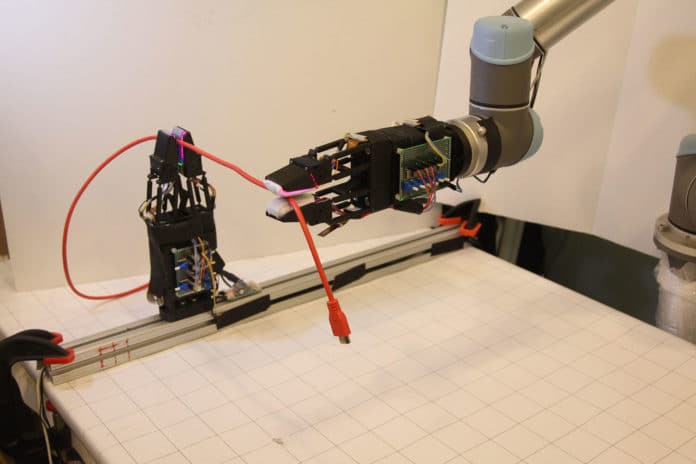Currently, hundreds of different researches are being done on new generation robots and automation technologies in many different countries around the world. Robot arms are another topic that giant universities and researchers have been working on for years. They can now successfully complete many sensitive tasks, including surgeries, and are even capable of carrying out scientific experiments in a laboratory by itself.
Recently, a group of researchers from MIT’s Computer Science and Artificial Intelligence Laboratory (CSAIL) has developed a new system that uses a pair of soft robotic grippers with high-resolution tactile sensors to successfully manipulate thin, flexible objects like ropes, wires, or cables. The technology can one day be used by robots to help us in both industrial and household tasks, like tying knots, wire shaping, or even surgical suturing.
Researchers say that such tasks have so far been difficult for humans as well, which makes it nearly impossible for robots because they could not recognize small deformations of such objects.
They, therefore, build a novel two-fingered gripper with vision-based “GelSight” sensors, built from soft rubber with embedded cameras. The gripper is mounted on a robot arm, which can move as part of the control system. There are basically two controllers in the system: one modulates grip strength, while the other adjusts the gripper pose to keep the cable within the gripper.
GelSight sensors estimate the pose of the cable between the fingers and measure the frictional forces as the cable slides.
To demonstrate their prowess, MIT researchers show how the robot plugs the earbuds into a mobile phone. The robot was able to slide the cable between the fingers and stop when it felt the plug touch its fingers. It then adjusted the pose of the plug and finally inserted it into the jack. It could also adapt to cables of different materials and thicknesses.
“Manipulating soft objects is so common in our daily lives, like cable manipulation, cloth folding, and string knotting,” says Yu She, MIT postdoc and lead author on a new paper about the system. “In many cases, we would like to have robots help humans do this kind of work, especially when the tasks are repetitive, dull, or unsafe.”
However, the robotic grippers had some difficulties pulling the cable back when it reached the edge of the finger, something that the researchers say is due to the convex surface of the GelSight sensor. Therefore, they are working to improve the shape of the finger-sensor to enhance the overall performance of the robot.
